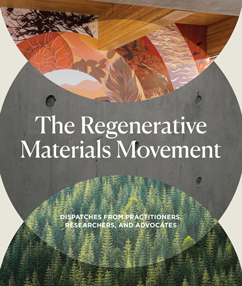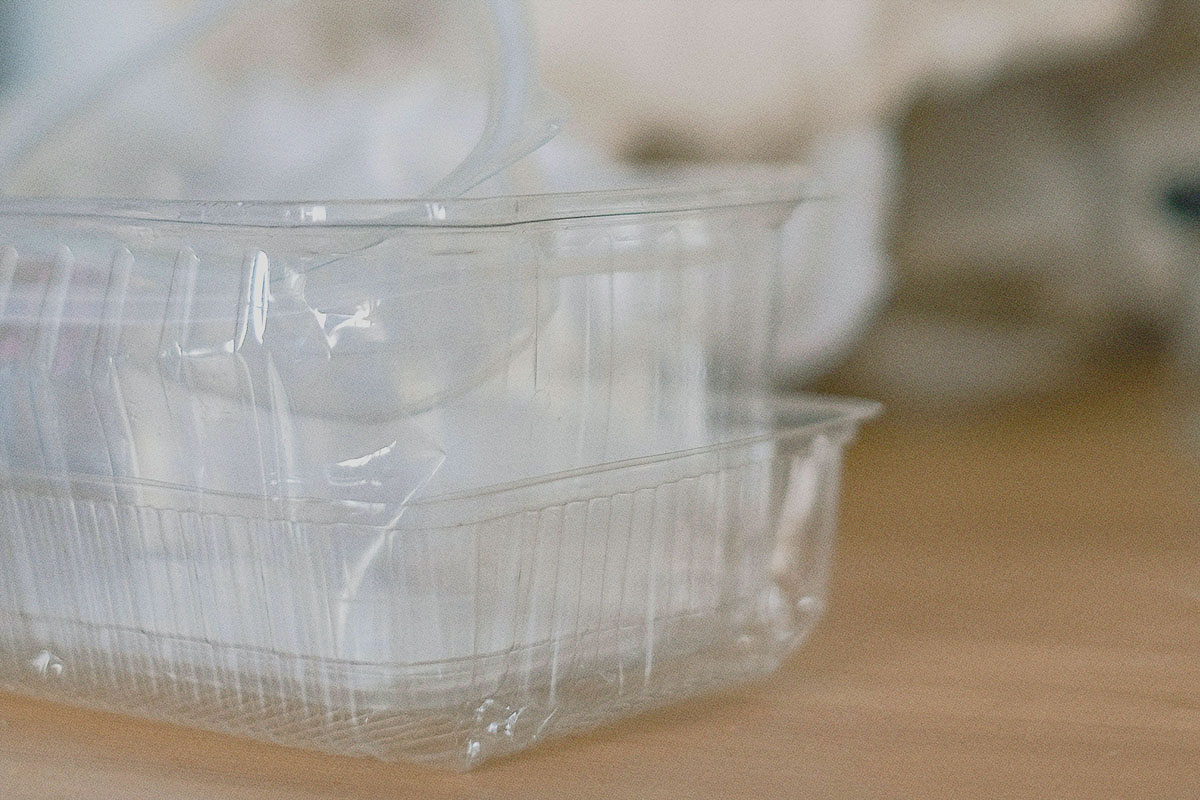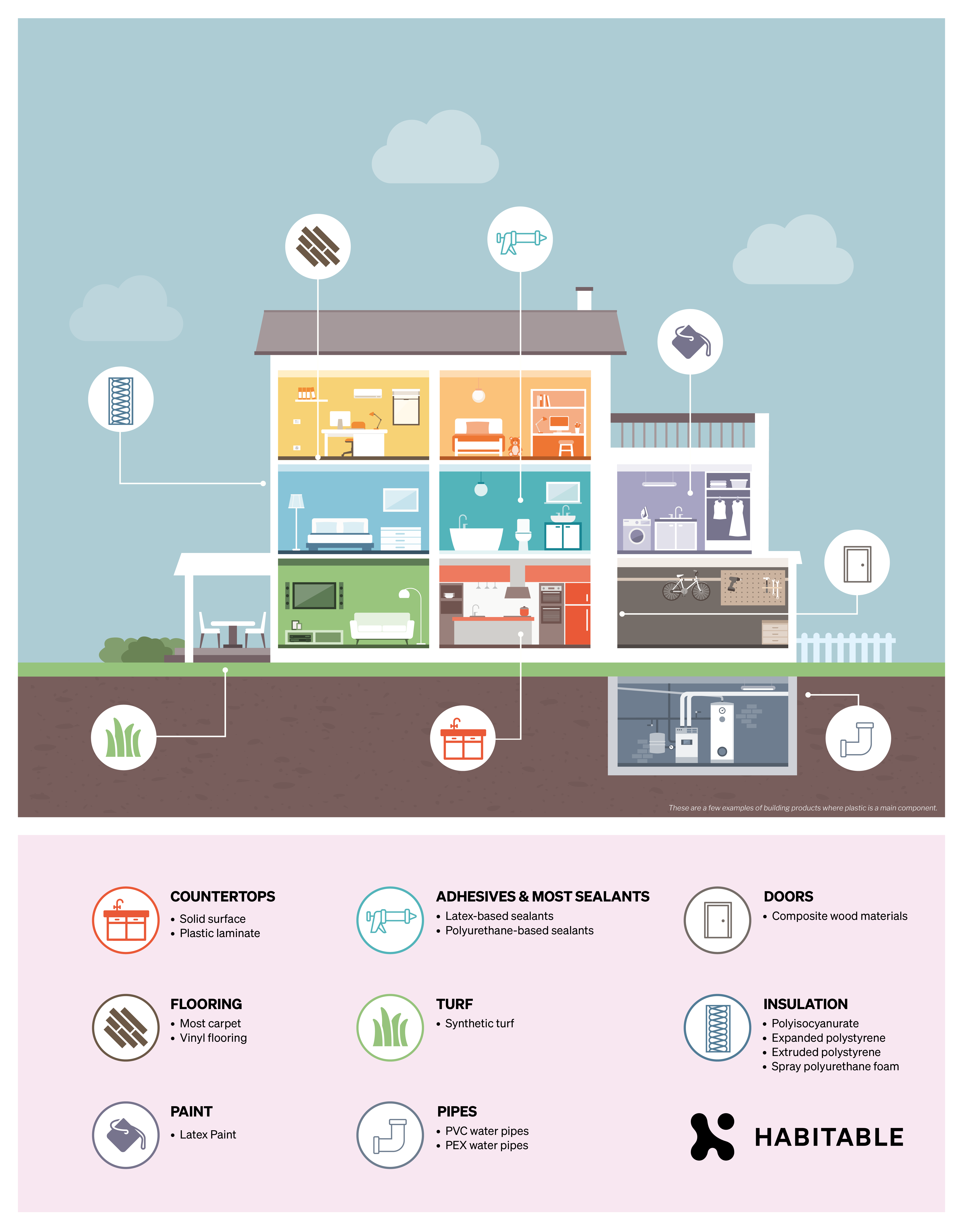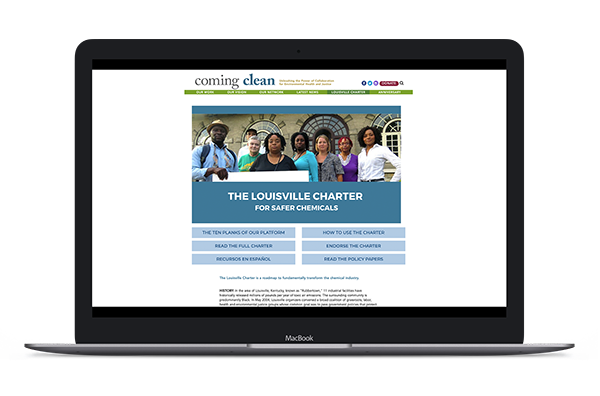 READ HABITABLE’S NEW REPORT
READ HABITABLE’S NEW REPORTThis chapter in ILFI’s book The Regenerative Materials Economy explores the often overlooked life cycle chemical and environmental justice impacts of building materials, focusing on insulation materials like fiberglass and spray polyurethane foam (SPF).
Through a framework rooted in green chemistry and environmental justice principles, authors Rebecca Stamm of HBN and Veena Singla of NRDC analyze manufacturing realities, environmental justice concerns, and environmental health impacts, providing recommendations to improve the industry’s sustainability and reduce the negative effects on marginalized communities.


This Women’s History Month, we’re celebrating an incredible leader in the green chemistry and healthy materials space: our very own Teresa McGrath! Teresa is Habitable’s Chief Research Officer, leading our research strategies.
Prior to working at Habitable, Teresa led the Chemical Management Program for Sherwin-Williams, the largest paints and coatings company in the world, where she focused on hazards reduction and transparency and assisted business units in meeting sustainability and green chemistry goals. She also spent nine years as the Senior Managing Toxicologist at NSF International’s Green Chemistry Programs, and two years at the Environmental Protection Agency in the Design for the Environment (DfE) Branch of the Office of Pollution Prevention and Toxics (OPPT).
We caught up with Teresa to learn why she’s a champion for safer chemicals and healthier products and to get her perspective on the industry today.
HABITABLE:
What got you interested in working in sustainable products and clean chemistry?
TERESA MCGRATH:
It all starts with my family. Specifically my father – who would never identify as an environmentalist – but through his actions taught me to care for those who are most vulnerable and to take care of our planet. For example, more than once I witnessed my dad giving CPR to an injured animal that one of our dogs had mangled. In grade school I disgusted my friends by pulling carrots out of a peanut butter and jelly coated baggie my father had reused (this was before reusable bags were a thing!).
In college I did a research project on how to remove pesticides from drinking water using a biocatalytic filter method. It took me until the end of the project to ask myself “Wait, why is this pollution in our drinking water to begin with? Why are we using chemistry in such an inefficient, clumsy way?” After a little digging I stumbled on the Twelve Principles of Green Chemistry, authored by Dr. Paul Anastas and Dr. John Warner. These principles are centered around using chemistry to prevent pollution rather than create it, to make efficient use of resources down to every atom, to avoid waste. This was an inspiring moment for me.

I decided to pursue a graduate degree in chemistry that focused on Green Chemistry. At the time the only graduate program focused entirely on “Clean Chemical Technology” was in the U.K. at University of York. Off to England I went, and I have worked in the field of Green Chemistry for my entire career.
H:
What has surprised you the most about working in this field?
TM:
I have worked in government, NGOs, and industry. I think what is surprising is how much these stakeholders have in common and how most people want the same things when it comes to human health and the environment. Most people want (to make, use, or buy) safer products that work well and they can afford. It is this alignment that we can all use to make progress.
The most exciting projects in my work experience were those that harnessed input from different stakeholders with different perspectives. For example, in 2017 Valspar invited NGOs and academics who fought against the use of the endocrine-disrupting chemical bisphenol A (BPA) to help them design and test alternatives to BPA for use in food packaging.
We can all learn from each other, and these moments of collaboration are critical to enable market changes toward products that are safer for human health and the environment.
H:
Who has inspired you along your journey?
TM:
In addition to Dr. Anastas and Dr. Warner, I am grateful to Dr. Lauren Heine, who I met at a Gordon Green Chemistry conference when I was in graduate school and has been a friend and mentor to me ever since. Dr. Heine is a leader in the field of green chemistry, green engineering, and sustainable business practices.
I first met Lauren when she was the Director of Applied Science at Green Blue Institute, where she developed the CleanGredients database in partnership with the U.S. Environmental Protection Agency (EPA) to help cleaning product manufacturers find safer alternatives. At Clean Production Action, she co-authored and led the development of the GreenScreen for Safer Chemicals, a method for comparative chemical hazard assessment. She has also worked as Director of Science and Data Integrity at ChemFORWARD, where she co-created a harmonized chemical hazard assessment methodology that will not helps people avoid chemicals of concern, but also identify safer alternatives. She serves on various advisory boards and committees all over the world to share with the rest of the world a bit of the brilliance whenever she can.
Lauren taught me that collaboration is one of the most important tools to inspire change. She has an unique ability to build connections and relationships with every project she is involved with. I aspire to approach my work with this same focus.
I also credit Lauren with helping me land my very first job out of graduate school at the EPA despite the fact that I handed her a printed resume on scented paper (long story!).
H:
What are you excited about?
TM:
When I talk to project teams about how they find and select healthier products for new construction or retrofits, I often hear that they rely on disclosures like Health Product Declarations (HPDs) or Declare labels, or ecolabels such as Greenseal or Cradle to Cradle certifications, or most often they rely on manufacturer claims about the product.
I’m feeling optimistic that there has been more traction with manufacturers using these great transparency programs. There are a limited number of products on the market today that carry disclosures, and even fewer that have ecolabels. Real estate teams often feel stuck when the product they want to select is not yet disclosed. Also, because a product carries a disclosure or an ecolabel does not mean it is the best choice to avoid hazards for that product category.
I believe that there is a lot of value in disclosures and product certifications and that they play a critical role in our ecosystem. And, I believe the most powerful way to achieve safer products is to start BEFORE relying on those product disclosure tools. Project teams can take advantage of product type guidance to select products that are typically safer than others – all before ever selecting from an individual manufacturer.
Habitable’s InformedTM product guidance is informed by our 20+ years of building materials research. Guidance for individual product categories are generated by analyzing everything we know about a product category, including the way the products are made, the hazards associated with the product content, and end of life options for different product types. The reason I am so excited about this resource is that it summarizes a LOT of technical information into a simple, easy to use format that can be applied easily to both benchmark current practices and select typically safer products for projects, and even help document the powerful impacts of choosing safer materials on a project.
H:
What advice do you have for up-and-coming leaders in this space?
TM:
Don’t be afraid to reach out directly to professionals to learn more about their jobs. Ask what experience they are looking for in candidates, what their day to day looks like, and even directly ask about open positions or internship opportunities. Once you are in a role, actively look for opportunities to meet people within and outside of your organization. By expanding your network you learn different perspectives and build your capacity to collaborate on your next project. I can say from experience that you can make an impact from many different vantage points. We need young energetic leaders in NGOs, government, industry, and academia who are passionate about making the world a better place!
Chemicals of concern lurk in a great amount products, from food packaging and computer monitors to lipstick and sunscreen, and you may not know that Habitable supports these industry sectors in their quest for safer chemicals.
Some companies have jumped ahead of regulations to voluntarily reduce or phase out specific chemicals of concern. One approach companies use for guidance is a Restricted Substances List or RSL. An RSL is a list of chemicals or chemical classes (a group of similar chemicals) that are restricted for use in a product.
RSLs can be an organization’s list of chemicals of concern for any industry, such as Green Science Policy Institute’s Six Classes of Problematic Chemicals, or they can be a voluntary industry standard, such as the furniture industry’s BIFMA e3/level list of chemicals restricted for use in certified products. At Habitable, we have created a one stop shop with our own chemical hazard database. Pharos – named for the ancient lighthouse of Alexandria – hosts all of these RSLs and more from a variety of industries to help suppliers screen their materials for chemicals of concern and design products that comply with their customers’ needs, and with health in mind.
Instead of checking each list individually, you can use Pharos to check a chemical against all RSLs by simply searching a chemical name or identifier (such as a CASRN). You can also search and download each list individually.

About Pharos
Pharos is a comprehensive independent database of chemicals, polymers, metals, and materials.
It was originally developed by the Habitable research team to save time by consolidating data from hundreds of different sources into one place. This system is available via subscription and is used by manufacturers, retailers, designers, NGOs, government groups, and academics across many industry sectors.
Pharos hosts hazard data for over 200,000 unique chemicals from more than 100 hazard lists. Pharos then maps these data to 25 different resulting types of human health and environmental hazards – such as reproductive toxicity or global warming potential – and assigns a hazard level (e.g high, moderate or low concern) for each endpoint. This translation and distillation of enormous amounts of complex data, to a searchable and practical set of bottom lines makes Pharos a powerful tool. Further, these data are constantly updated to ensure users get the most current information. Pharos helps companies save time finding hazard information, reducing risks by avoiding chemicals of highest concern, and leading the market with safer products. One specific way companies utilize Pharos in their chemicals management process is with RSLs.
Food Packaging Industry Example
While 12,000 different chemicals are approved for use in the manufacture of food contact materials and articles, most of those chemicals have little to no chemical hazard data associated with them, and some are known to be toxic to humans and/or the environment. 1
Recently a global coalition of leading food service companies, environmental NGOs, and technical experts jointly developed a harmonized Food Contact Chemicals of Concern List (FCCoCL). Hosted on Pharos, FCCoCL provides users with a clear pathway to avoid the most concerning chemicals.
The voluntary actions taken by companies to disclose and verify the absence of chemicals of concern will help them stay ahead of legislative and regulatory requirements and establish themselves as industry leaders.
Use RSLs to facilitate internal chemicals management.
Whether or not your company’s chemicals management policy is public, an RSL can reduce or eliminate restricted substances in your facilities and in your suppliers’ incoming materials. For example, the Zero Discharge of Hazardous Chemicals Manufacturing Restricted Substances list (ZDHC MRSL), available in Pharos, catalogs substances that are banned from intentional use in the apparel and footwear industries and their supply chains. By communicating these restrictions to the entire supply chain, manufacturers minimize the impact of banned hazardous chemicals on production workers, local communities, and the environment, while helping meet their corporate sustainability goals.
Use RSLs to maximize your customers’ peace of mind.
Retailers, brands, and manufacturers have published Restricted Substances Lists (RSLs) to help their suppliers identify the top priority chemicals to remove or minimize in their products and processes. For example, Target has relied on an RSL to implement their Chemicals Policy since 2017. Their latest list, the Target Priority Chemical List, is intended to incentivize and support the design of beauty, baby care, personal care, and household cleaning products that are better for people and the planet.
Don’t Stop There!
RSLs are a great way to get started working towards eliminating chemicals of known concern, but they do have limitations. RSLs tell you what not to use, but they cannot tell you what chemicals to use. The best next step beyond RSLs is to prefer fully disclosed, fully assessed, safer alternatives.
To identify safer alternatives, we recommend starting with full chemical hazard assessments, such as a GreenScreen for Safer Chemicals or those found in the ChemFORWARD shared repository of chemical hazard assessments. Hazard assessments enable informed decisions towards safer alternatives.

You can use Pharos’ comprehensive data to reduce the use of hazardous chemicals and improve the inherent safety of materials and products.
By taking advantage of RSLs and other hazard screening tools hosted within Pharos, you can save time and money, advance human and environmental health, and future-proof your products and supply chain. Visit Pharos to learn more or subscribe today!
PS: If you want your RSL added, let us know!
If you’d like to have your RSL added to Pharos to facilitate your chemicals management—or you’d just like to learn more about Pharos—contact us at support@habitablefuture.org today!
The idea of a “plastic building” might bring to mind Barbie DreamHouses or Lego towers, but probably not the real life spaces we occupy every day. However, plastics have a long history of use in construction and are increasingly being used in a wide variety of building products.
What are plastics?
Plastics are synthetic or semi-synthetic materials typically made from fossil fuels and their byproducts.1 Depending on the plastic’s intended use, they may also be combined with a variety of additives such as stabilizers, fillers, reinforcements, plasticizers, colorants, and processing aids, many of which are toxic chemicals that are linked to chronic disease. They are a material of choice in the built environment, however, they come with a host of deeply rooted problems.
Durable plastics are the new “frontier”
As the energy sector shifts away from fossil fuels, the fossil fuel industry has turned toward plastics as a way of maintaining demand for their products.2 An International Energy Report from 2018 showed that petrochemicals, which are used to make plastics, are slated to become the largest driver of global oil demand in the near future.3 Historically, much of the investment has been in single-use plastics, which are increasingly the focus of bans, restrictions, regulations, and product innovation due to their harmful environmental effects.2 To pick up this anticipated slack, petrochemical, fossil fuel, and plastics industries are now pushing to increase their market growth in more durable goods, like building materials.4 The building and construction industry is already the second largest consumer of plastics after packaging.5
Plastics contribute to climate change
Plastics contribute to greenhouse gas emissions at every stage of their lifecycle. Greenhouse gases are released during fossil fuel extraction, transport, feedstock refining, and plastic manufacture, and carbon is released into the atmosphere through degradation and incineration at plastic products’ end of life.6 A 2019 Center for International Environmental Law report concluded that these lifecycle emissions may make it impossible to keep global warming below 1.5 degrees if growth continues as projected.6 Any comprehensive climate change plan must curb the production of plastics.
Plastic is ubiquitous in buildings
Maybe you know that vinyl flooring is plastic, but did you know that latex paint is mostly plastic? That many insulation products are plastic? How about carpet? Plastic-containing products can be found in almost every part of a building, from the waterproofing on foundations to roofing materials. See below for an infographic showing just some of the plastic materials in an average home. The products included are not exhaustive, but rather a list of example product types from Habitable’s InformedTM product categories where a main component is plastic. There are many more products that are predominantly made of plastic, and even more that contain smaller amounts of plastic additives or plastic binders.
Our plastic buildings are driving the growth in fossil fuels at the same time as we are diligently working to incorporate clean energy solutions and decarbonize these very same places.
Hidden costs of cheap plastic
Plastic products are often favored due to their “low cost.” This low retail cost is achieved by avoiding and externalizing the costs of fossil fuels and industrial pollution – and their related chronic diseases – throughout the plastics supply chain. These externalized costs are real and paid for by the BIPOC and low-income communities across the nation who are disproportionately burdened with toxic pollution flowing from refineries, chemical manufacturing, and plastics plants. It is fair to say that most of the stories about environmental justice that you have heard can be linked to plastics manufacturing.

Where is the plastic in my building?

With the building and construction industries anticipating growth over the next several years,7 commensurate growth is to be expected in their use of plastics. Indeed, market trends and projections show a steady increase in polyvinyl chloride (aka vinyl), polystyrene, polyethylene, polyurethanes, and other plastics used in building materials.8
It is, of course, unrealistic to avoid all plastic in building materials at this time, but there are steps we can take to reduce plastic waste, decrease toxic chemical use, and curb the demand for fossil fuels.
Select Better: Avoid worst-in-class plastics where possible.
- Where product performance and chemical hazards are similar or better, non-plastic products are preferred.
- Not all plastic products are the same when it comes to impacts. Where plastic products are needed, avoid halogenated plastics or plastics reliant on halogenated chemistry during production – such as polyvinyl chloride (PVC, also known as vinyl) and epoxy-based materials.
- Where plastic products are needed, avoiding virgin plastic materials reduces demand for oil and gas extraction and ultimately mitigates harmful end of life scenarios for the plastic waste such as incineration or landfilling.
Prioritize Transparency: Prefer products that provide transparency
- Disclosure of product content including the type of plastic used and any potential additives will allow for healthier materials choices and better material end-of-life planning.
- In the case of products containing recycled plastics, disclosure of where the recycled content originated and any additives that may be present is crucial in selecting healthier products.
Aim for Circularity: Select products designed for recycling.
- Where possible, incorporating recyclable building materials in ways that allow for end-of-life recycling is preferred.
- Prefer products with “take back” programs. Because true plastics recycling rates are abysmal, the most promising recycling programs are those in which manufacturers retain responsibility for their products and provide recycling options.
- Prefer products that are made with high levels of recycled content that has been screened to avoid toxic tag-alongs and, equally as important, contact manufacturers to recycle any existing product.
With all of these plastic products, our buildings may seem increasingly like Barbie’s DreamHouse and a climate nightmare, but as specifiers, designers, architects, contractors, and owners we can do much to control what products end up in our projects. Starting with the recommendations above, we have the power to influence demand for better and safer materials. In the case of plastics, choosing better materials can lead to less reliance on fossil fuels, fewer greenhouse gas emissions, a decrease in toxic chemical use, and a win for our changing climate.
SOURCES
- For the purposes of this article we are including any synthetic polymer in our definition of a plastic, including thermoplastic, thermoset, and elastomeric polymeric materials.
- Ciel, 2018:
https://www.ciel.org/wp-content/uploads/2018/04/Fueling-Plastics-Untested-Assumptions-and-Unanswered-Questions-in-the-Plastics-Boom.pdf - IEA, 2018: https://iea.blob.core.windows.net/assets/bee4ef3a-8876-4566-98cf-7a130c013805/The_Future_of_Petrochemicals.pdf
- Plastics Industry Association, 2016:
https://www.plasticsindustry.org/article/growing-role-plastics-construction-and-building - UNEP, 2021:
https://www.unep.org/resources/report/neglected-environmental-justice-impacts-marine-litter-and-plastic-pollution - CIEL, 2019:
https://www.ciel.org/plasticandclimate/ - BusinessWire, 2021:
https://www.businesswire.com/news/home/20210111005587/en/Global-Construction-Industry-Report-2021-10.5-Trillion-Growth-Opportunities-by-2023—ResearchAndMarkets.com - Grandview Research, 2018:
https://www.grandviewresearch.com/industry-analysis/building-construction-plastics-market

What do building materials have to do with social justice? Learn more in this article by Diana Alley, Avideh Haghighi, and Lona Rerickat at ZGF Architects.

PFAS are used in paints, food packaging and even cosmetics. We know they are in our water, air, soil and bodies – but less about how they will affect us.
The Louisville Charter for Safer Chemicals, endorsed by over 100 organizations, confronts the chemical industry’s role in the climate crisis and provides guidance for advancing environmental justice in communities disproportionately affected by harmful chemical exposure.


This report discusses how President Biden’s Executive Orders need to go further than examining energy sources to combat the climate crisis, emphasizing the need for the chemical industry to adapt and innovate, considering its significant impact on greenhouse gas emissions and environmental health.

Health Care Without Harm Europe advocates for the complete elimination of PVC due to its environmental impact, urging policymakers to develop a strategy for its phase-out in Europe.
If we are to have any chance of addressing the global plastics crisis, Polyvinyl Chloride plastic (PVC) also known as vinyl, has got to go.
It cannot be produced sustainably or equitably. It cannot be “optimized.” It cannot be recycled. It will never find a place in a circular economy, and it makes it harder to achieve circularity with other materials, including other plastics.
There are three reasons for this: technical, economic, and behavioral. The inherent qualities of PVC and its cousin, CPVC, make it among the most technologically challenging plastics to recycle. Like most plastics, PVC is made with fossil fuel feedstocks. Unlike other plastics, PVC/vinyl also contains substantial amounts of chlorine, upwards of 40%. This is the C in PVC, and this chlorine content adds an additional layer of negative impacts to the earth and its people, social inequity, and an impediment to recycling that cannot be overcome. Recyclers consider it a contaminant to other plastic feedstock streams.1 It mucks up the machines and the already perilous economics of plastics recycling.

There is an emerging global consensus on this point, albeit euphemistically stated. The Ellen MacArthur New Plastics Economy Project consists of representatives from the world’s largest plastic makers and users, along with governments, academics, and NGOs. In 2017 it reached the conclusion that PVC was an “uncommon” plastic that was unlikely to be recycled and should be avoided in favor of other more recyclable packaging materials.2 “Uncommon” in the diplomatic parlance of international multistakeholder initiatives means unrecyclable. The project also took note of the many toxic emissions associated with PVC production.
That’s not surprising since after 30 years of hollow promises and pilot projects doomed to fail, virtually no post-consumer PVC is recycled.3 Conversely, leading brands with forward-looking materials policies such such as Nike, Apple, and Google have prioritized PVC phase outs.4
But in the building industry, PVC rages on. Virgin vinyl LVT flooring is the fastest growing product in the flooring sector. So much so that in 2017 sustainability leader Interface introduced a new product line of virgin vinyl LVT, despite forecasting just one year before that by 2020 the company would “source 95 percent of its materials from recycled or biobased resources.”5
The current flooring market demands the impossible – aesthetic qualities and durability at a price unmatchable by non-vinyl floor coverings. A price that is unmatchable because at every stage of vinyl production, the societal costs of its poisonous environmental health consequences are externalized, subsidized, paid for by the people who live in communities that have become virtual poster children for environmental injustice and oppression. Places like Mossville, LA; Freeport, TX; and the Xinjiang Province in China, home to the oppressed Uighur population. As we detail in our exhaustive Chlorine and Building Materials report, the unique chlorine component of PVC plastic contributes to a range of toxic pollution problems starting with the fact that chlorine production relies upon either mercury-, asbestos-, or PFAS-based processes. This is in addition to the onerous environmental health burdens of petrochemical processing that burden all plastics.
It is true that all plastics contribute to environmental injustices. Virtually all plastics are made from fossil fuel feedstocks, and all plastics share abysmally low recovery and cycling rates. Still, independent experts agree that some plastics are worse than others, and PVC is among the worst.6 Additionally, most uses of PVC have readily available alternatives or solutions that are within reach. Certainly there are non-PVC alternatives for flooring. What can’t be beat is the cost – that is, the low purchase price at the point of sale, subsidized by the sacrifices we ignore in the communities where the plastics are manufactured and the waste is dealt with. And BIPOC communities bear the disproportionate burden of it all. Acknowledging and addressing this tradeoff is at the root of the behavioral change that stands between us and a just and healthy circular economy.
In his influential book How To Be An Antiracist, Dr. Ibram X. Kendi argues that if we recognize we live in a society with many racial inequities – and acknowledge that since no racial group is inferior or superior to another, the cause of these inequities are policies and practices – then to be anti-racist is to challenge those policies and practices where we can and create new ones that create equity and justice for all.
Imagine if as part of our commitment to equity in our sustainability efforts, we recognized, acknowledged, and did what we could to address the racial inequities associated with PVC production, and committed right now to stop using PVC unless it was absolutely essential. The plastics industry would howl and point out inconsistencies, question priorities, highlight unintended consequences. We would all feel a tinge of whataboutism – what about carbon, or this other injustice, or that shortcoming of the alternatives. But it is clear that widespread incrementalism is failing us on so many fronts, none more than the environmental injustices that are hardwired into our supply chains.
In fact, there are many examples of companies and building projects that have prioritized PVC-free alternatives based upon principles of equity and justice. We need more leaders in the field to join those who are abandoning vinyl in product types that have superior options. Our CEO Gina Ciganik used a non-PVC flooring in 2015 at The Rose, her last development project prior to joining HBN.
First Community Housing, another affordable housing leader, has been using linoleum for many years for similar reasons. In their Leigh Avenue Apartments project. Forbo’s Marmoleum Click tiles were the flooring of choice.
Vinyl is not an essential material for any of the largest surface areas of our building projects – flooring, wall coverings, or roofing. It may often be the conventional choice in conventional buildings, but it should not be the conventional choice in buildings that promise to be green, healthy, and equitable. LVT may be the fastest growing flooring product in the world, but it is a throwback to the inequitable, unsustainable world we say is unacceptable, not the world we are trying to create.

Habitable can help you start by using our Informed™ product guidance, which helps identify worst and best in class products that are healthier for people and the planet. So why not start here and now, with a principled stand of refusing to profit from unjust, frequently racist, externalized costs?
SOURCES
- https://plasticsrecycling.org/pvc-design-guidance
- See pp. 27-29: www.newplasticseconomy.org/assets/doc/New-Plastics-Economy_Catalysing-Action_13-1-17.pdf
- See e.g. Figure 1: https://css.umich.edu/publication/plastics-us-toward-material-flow-characterization-production-markets-and-end-life
- See e.g.: www.apple.com/environment/answers (Apple); www.greenpeace.org/usa/reports/greener-electronics-2017 (Google); www.latimes.com/archives/la-xpm-1998-aug-26-fi-16540-story.html (Nike)
- www.greenbiz.com/article/inside-interfaces-bold-new-mission-achieve-climate-take-back: “Going Beyond Zero” The march towards Mission Zero continued unabated, however, with consistent year-over-year improvement in most metrics. Today, the company forecasts that by 2020 it will halve its energy use, power 87 percent of its operations with renewable energy, cut water intake by 90 percent, reduce greenhouse gas emissions 95 percent (and its overall carbon footprint by 80 percent), send nothing to landfills, and source 95 percent of its materials from recycled or biobased resources.
- www.cleanproduction.org/resources/entry/plastics-scorecard-press-release

 Equity
Equity Health
Health Climate Change
Climate Change Pollution
Pollution